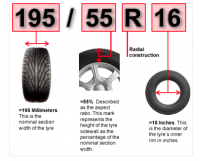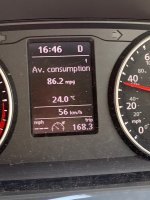stephen watson
I'm getting a bit confused now. For a 17" wheel the height of the tire is the width x profile. For 235/55 therefore 235x.55=129.25 and 216x.6=129.6The 16"/17" refers to the wheel. As far as I am aware the tyre diameters are either the same or close to the same. The 215/235 refers to the width, with the 235 having 20mm more rubber in contact with the road and thus more friction. The tread pattern may also make a difference to the friction.
I'm afraid that I do not know who the odometer measures distance. I expect it counts wheel revolutions and calculates distance by multiplying revolutions by tyre circumference.
Therefore if you buy a beach with 16" wheels the speedo/odometer is set at the factory and if you subsequently change the wheel size to 17" it will make a difference as the overall diameter has decreased, irrespective of what profile tyre you fit.

















